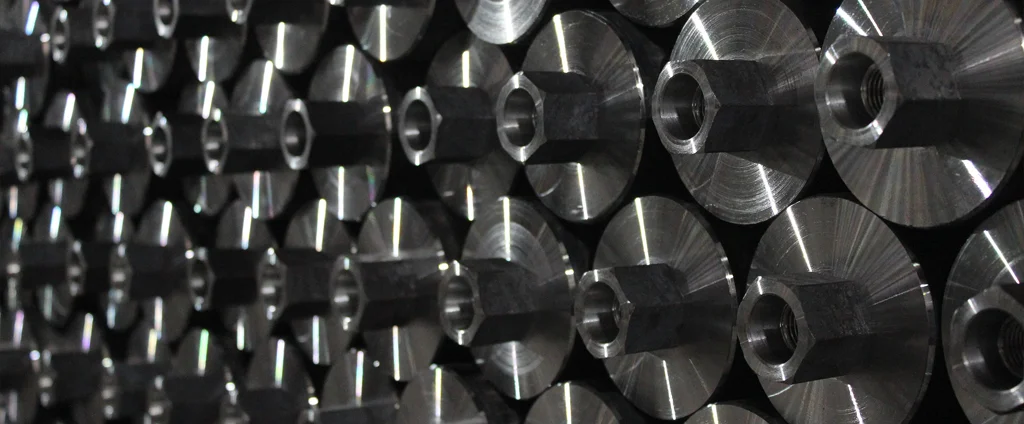SAE/AISI E52100 Alloy Steel (UNS G52986)

SAE/AISI E52100 is a high-carbon chromium alloy steel recognized for its superior hardenability and exceptional wear resistance. Widely utilized in precision components, it delivers outstanding performance in applications such as bearings, gears, shafts, and pins.
| Chemical Composition | ||
|---|---|---|
| Element | Min | Max |
| Iron | 96.5% | 97.3% |
| Carbon | 0.98% | 1.10% |
| Chromium | 1.30% | 1.60% |
| Manganese | 0.25% | 0.45% |
| Phosphorous | —— | 0.025% |
| Silicon | 0.15% | 0.30% |
| Sulfur | —— | 0.025% |
The following table provides a list of SAE/AISI E52100 properties in both SI and US customary/Imperial units.
Click on the button to switch between Metric and Imperial units.
| Physical Properties | Metric |
|---|---|
| Density | 7810 kg/m3 |
| Mechanical Properties | Metric |
| Young’s Modulus (E) | 190 - 210 GPa |
| Bulk Modulus (K) | 140 GPa |
| Shear Modulus (G) | 80 GPa |
| Poisson’s Ratio (ν) | 0.27 - 0.30 |
| Thermal Properties | Metric |
| Thermal Conductivity | 46.6 W/m·K |
| Specific Heat Capacity (Cp) | 470 J/kg·K |
| Coefficient of Thermal Expansion (αL) | 1.2×10-5 1/°C |
The values in this table are approximate and can vary depending on various factors such as the specific manufacturing process and heat treatment applied to the alloy.
Advantages & Disadvantages of E52100 Alloy Steel
| Advantages | Disadvantages |
|---|---|
| High hardness and wear resistance | Susceptible to corrosion if not protected or maintained properly |
| Excellent strength and toughness | Relatively high cost compared to some other steels |
| Good dimensional stability | Requires careful heat treatment for optimal performance |
| Superior fatigue resistance | Limited weldability |
| High load-carrying capacity | Prone to brittleness under certain conditions |
| Suitable for high-temperature applications |
Applications of E52100 Alloy Steel
Due to its high hardness, wear resistance, and strength, E52100 alloy steel is employed across diverse industries in critical components, including:
- Ball Bearings: Widely used in manufacturing ball bearings, offering excellent hardness, wear, and fatigue resistance for high load and speed applications.
- Roller Bearings: Utilized in roller bearings for automotive, industrial machinery, and aerospace, providing high load capacity and durability.
- Thrust Bearings: Applied in thrust bearings designed to handle axial loads in automotive transmissions, machine tools, and heavy-duty equipment.
- Bushings and Sleeves: Fabricated to provide low-friction surfaces for rotating shafts or axles, used in automotive, aerospace, and manufacturing sectors.
- Linear Motion Systems: Employed in linear guides and rails to ensure smooth, precise linear movement in machinery and equipment.
- Cutting Tools: Occasionally used in drills, milling cutters, and taps due to its hardness and wear resistance, supporting metalworking processes.
- Automotive Components: Incorporated in gears, shafts, and transmission parts requiring high strength, wear resistance, and durability.
- Machine Components: Used in high-stress, wear-prone parts such as spindles, shafts, and cam followers.
- Surgical Instruments: Selected for instruments demanding sharp cutting edges and corrosion resistance.
